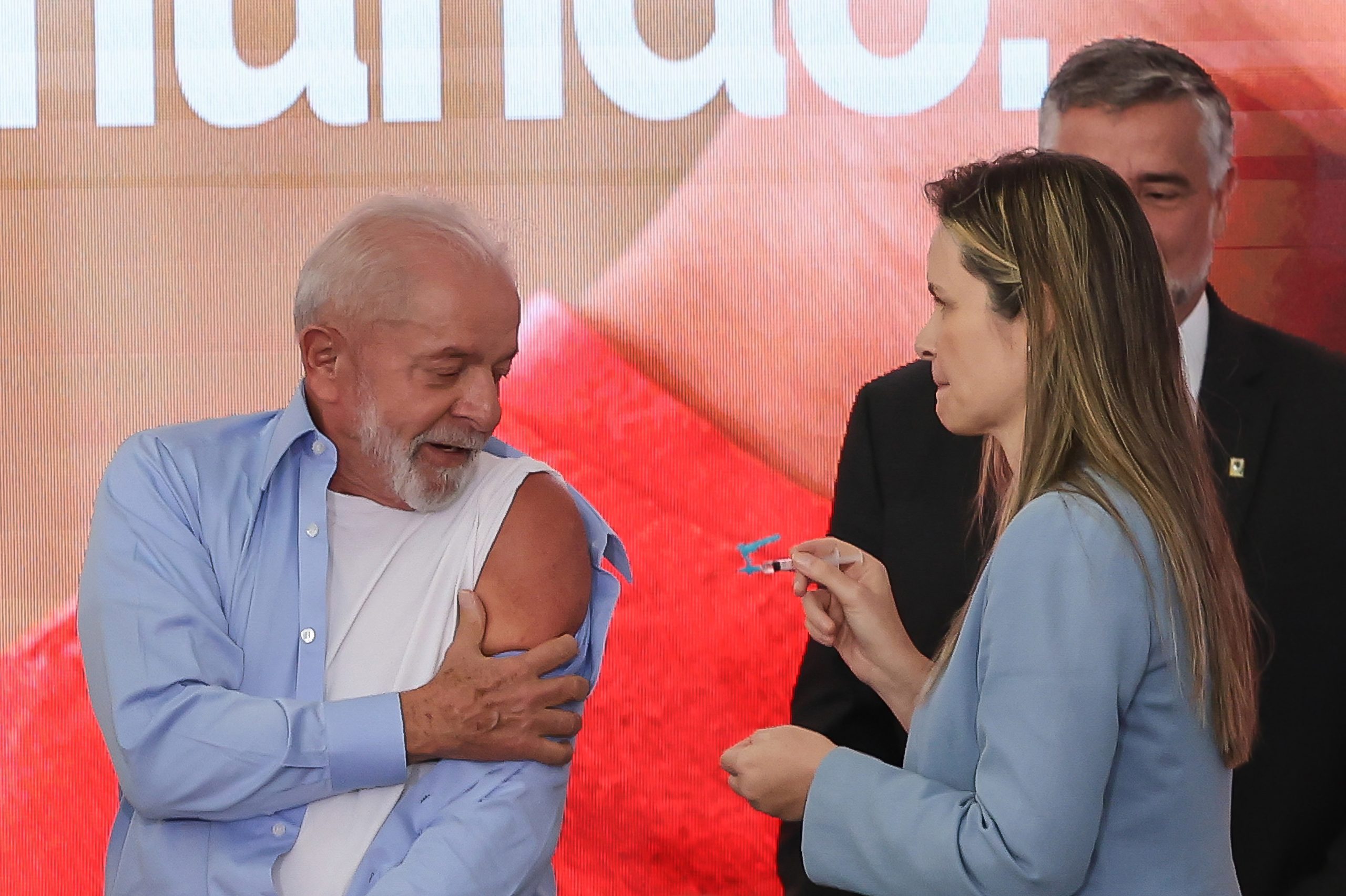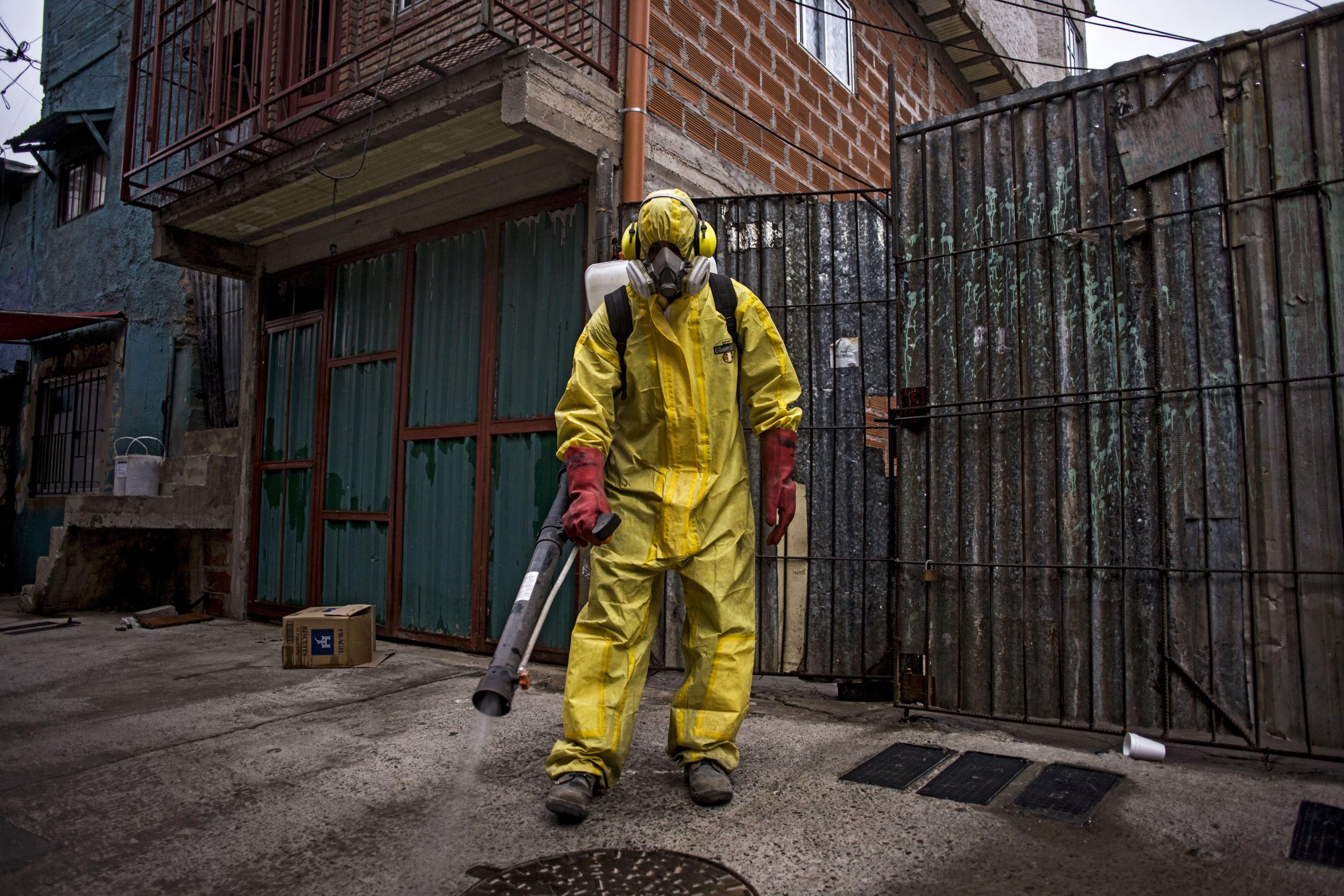In Argentina, more than 447,000 cases have been registered so far this year – more than three times higher than were recorded in the same period of the 2022–23 season, according to official figures from the country’s health ministry. However, the government response has been almost nil. The administration of right-wing libertarian president Javier Milei, in its attempts to reduce public spending amid economic challenges, eliminated the information campaigns on preventing the spread of the disease, which have traditionally been broadcast during the summer season on radio, television and in the print media.
A dengue vaccine, produced by the Japanese laboratory Takeda, is already available in the country but can only be accessed privately and at a relatively high cost, as it is not part of the national vaccination programme. During the first days of May, the health ministry announced that it would begin a public vaccination plan focused on the most affected regions, but full details have not yet emerged. The two-dose vaccine provides protection against the four dengue viruses and had already been approved by the National Administration of Medicines, Food and Medical Technology (ANMAT) in 2023, as well as by regulatory agencies in the European Union, the United Kingdom, Brazil, Colombia, Norway, Iceland, Malaysia, Indonesia and Thailand. On 10 May, the vaccine was prequalified by the WHO, certifying it as safe and effective at the international level. The organisation recommends its use in children aged 6 to 16 years in settings with a high burden of dengue and high levels of transmission.
In Brazil, the Japanese dengue vaccine has been incorporated into the national schedule. This February, in the midst of the outbreak, vaccination began for children aged 10 to 14 years in the ten most affected states; this has been the age group with the highest number of hospitalisations. At the same time, a domestic clinical trial began and more than six million doses are expected to arrive from Japan to Brazil over the course of the year, vaccinating approximately three million people. In 2024 so far, Brazil is estimated to have already had more than 5 million cases, with more than 3,000 confirmed deaths – a record number.
 In April, Brazilian president Luiz Inácio Lula da Silva received a dengue fever vaccine at a press conference in BrasĂlia. More than 5 million cases of dengue fever have been reported in Brazil since the beginning of the year (Image: Antonio Cruz / AgĂŞncia Brasil)
In April, Brazilian president Luiz Inácio Lula da Silva received a dengue fever vaccine at a press conference in BrasĂlia. More than 5 million cases of dengue fever have been reported in Brazil since the beginning of the year (Image: Antonio Cruz / AgĂŞncia Brasil)
Peru is another country where diagnoses have already set an all-time high: more than 248,000 infections have been registered in 2024, and cases have tripled compared today the same period last year. With no vaccination in sight in the country, the Peruvian health ministry has focused on prevention measures such as communication campaigns, targeted control of mosquito breeding sites, and the spraying of insecticides.
Paraguay saw its first dengue epidemic between 1989 and 1990. Since its current outbreak began in September 2023, official sources report that there have been more than 45,000 confirmed cases and more than 47,000 probable cases. There are still no vaccines in the country, but according to its health ministry, talks are ongoing with the Pan American Health Organization over possible imports.
Beyond each nation, Epstein says it is essential that there is a regional response, which is currently lacking: “It is estimated that 500 million people in the Americas are at risk of dengue and therefore there should be a coordinated response at the regional level, in terms of building on existing knowledge and creating early warning systems.”
Poverty, a risk factor for the spread of dengue fever
In addition to its hot and humid summer climates, South America’s high rates of poverty have been a key factor in the spread of dengue fever. According to data from the Economic Commission for Latin America and the Caribbean (ECLAC), almost a third of the region’s population lives in poverty. Although it is not a necessary condition for the spread of the infection, for many scientists this is a significant risk factor, especially for severe dengue.
Lack of safe drinking water – which leads to unsafe storage of liquid – insufficient access to repellents, and the reduced use of mosquito nets and air conditioners due to their high costs all contribute to the high burden of dengue disease in the region’s most vulnerable neighbourhoods.

A person fumigating the Padre Mugica neighbourhood in Buenos Aires to prevent the spread of dengue and coronavirus, March 2020. The neighbourhood is one of the poorest and most densely populated areas of Argentina’s capital (Image: Alamy)
Tomás Orduna, an Argentine tropical infectious disease physician and former president of the Latin American Society of Travel Medicine (SLAMVI), gave further reasons why a link can be made between dengue and living conditions in vulnerable neighbourhoods. He points to increased transmission due to the expansion of densely populated informal urban neighbourhoods, and more mosquito breeding sites per square kilometre due to poor waste management.
“Humans create the perfect breeding places in our homes and neighbourhoods for Aedes to survive and reproduce,” the specialist said.
The future: year-round dengue?
In most countries, such as Argentina and Peru, dengue has historically been a seasonal disease, arriving at the beginning of summer and receding with the first cold weather in autumn. However, experts highlight that this year dengue could extend its stay through the winter and cease to be a summer disease. Although cases have begun to decline, they still persist. Â
“The transmission periods are longer, it’s no longer just [during] high temperatures,” says Lescano. “We used to have relatively long winters with relatively low temperatures, during which not only were there no mosquitoes present, but in some places the temperatures were so low that the few eggs that remained died. But now the temperatures are not so low and the mosquitoes can survive.”
We have failed at the global level, and we have not done enough at the state, community and individual level to eliminate Aedes aegypti breeding sitesTomás Orduna, tropical infectious disease physician
Speaking to CNN Radio Argentina in April, infectious disease specialist Rogelio Pizzi pointed to challenges confronting dengue as the Aedes mosquito has adapted to the local climate, and there is already viral circulation in 19 Argentine provinces.
In the same vein, Orduna said that in the north-east of the country, dengue had already ceased to be seasonal this year: “It started in January 2023 and continues to this day, every month there have been autochthonous [locally-acquired] cases.”
What to expect in the future? Many cases of dengue, with across an even wider area, according to Orduna: “We have failed at the global level, and we have not done enough at the state, community and individual level to eliminate Aedes aegypti breeding sites.”
“,”body”:””,”footer”:””},”advanced”:{“header”:”\r\n”,”body”:””,”footer”:””}}”,”gdpr_scor”:”true”,”wp_lang”:”_en”};
/* ]]> */
Source link : https://dialogue.earth/en/climate/dengue-fever-a-future-constant-in-south-america/
Author :
Publish date : 2024-06-18 07:12:13
Copyright for syndicated content belongs to the linked Source.












